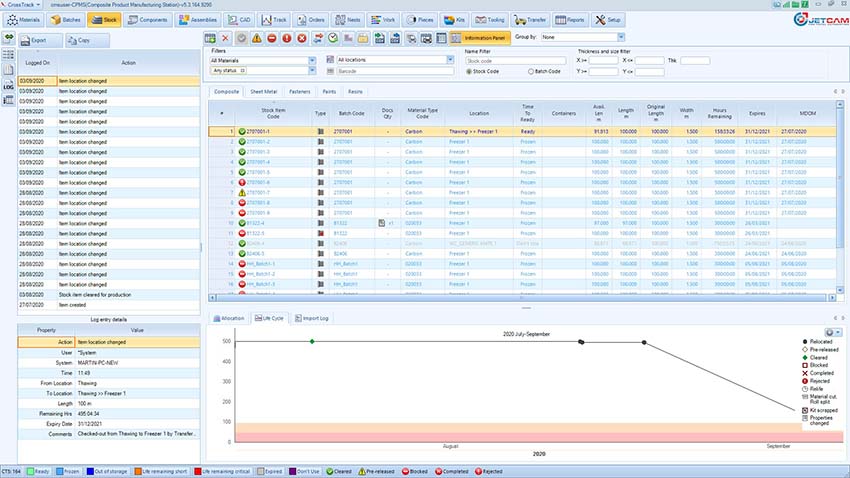Since 1968, JETCAM has developed and distributed nesting and automation software for the sheet metal and composite manufacturing industries. Originally founded in Australia, the company’s headquarters are now in Monaco, with a network of resellers and OEMs worldwide.
Interview with Martin Bailey, General Manager at JETCAM.
Easy Engineering: What are the main areas of activity of the company?
Martin Bailey: Nesting software for driving punching and profiling machines. Automation software for scheduling nests for cutting, complete line automation, material location, life and consumption tracking, and data exchange between our systems and ERP/MES/other data systems on the shop floor
E.E: What’s the news about new products?
M.B: We recently launched a new ultra performance nester, which has some unique features that give users more control over nesting efficiency versus easier unloading or fewer nests to run. There’s also new functionality designed for customers with automatic unloading systems, that will make additional cuts around corners to make unloading more reliable. Improvements to our heat avoidance and JETCut fly cutting logic have help laser users to increase their throughput whilst also improving on part quality.
E.E: What are the ranges of products?
M.B: Our core product is JETCAM Expert – all customers will have at least one of these licenses. We then have other products that deliver additional functionality, extending our reach onto the shop floor. JETCAM Orders Controller automates and simplifies the CAD import and nesting process, allowing users to drag and drop DXF files onto the screen and quickly program them for one or more machines/cutting technologies. From there, highly optimized nests can be created within minutes, ready for cutting on the shop floor. CrossTrack takes this further, by providing real time tracking of raw materials and cut pieces as they move around and between processes within the shop floor, also providing shop floor scheduling and full traceability. Both systems can be easily integrated into ERP/MES systems, accelerating workflow processes and reducing the possibility for error.

E.E: At what stage is the market where you are currently active?
M.B: This tends to differ per region, and we are active worldwide. Some markets are more interested in automation. Unloading and sorting is a priority for many, hence the recent developments in this area. Other markets have lower levels of automation, although the ability to simplify traditionally complex processes such as nesting continue to be popular.
E.E: What can you tell us about market trends?
M.B: As mentioned earlier, integration with systems further down the manufacturing line continues to gain interest. Our line automation software has, for example, proven very successful in Italy, where customers are driving cells comprising of CNC lasers, towers, loading/unloading and sorting technologies – all driven by JETCAM through the PLC.
E.E: What are the most innovative products marketed?
M.B: Our CrossTrack product has now crossed over from being a composite product to also a sheet metal product. We are currently migrating our standalone line automation software over to CrossTrack, which itself already has powerful data exchange tools and is SQL Server-based, so it’s very easy for it to connect to existing systems. One reason that it’s become so attractive is that we provide development licenses free of charge – this allows customers to test new versions and try out new features or workflows in a sandboxed environment, and then safely roll them out once they are satisfied.

E.E: What estimations do you have for 2023?
M.B: We’re making changes to some of our mid-range products to increase the options for automation at a lower price point. So, we expect to see a significant take-up of these products in Q3/Q4 of 2023 when they are launched. We expect CrossTrack’s connectivity range to grow – we are already getting customers ask us to connect it to technologies that we had not considered when it was originally developed, however it was designed in such a way to make it scalable. Every single customer uses the same off-the-shelf system, and because we have various methods of data exchange it’s extremely easy to slip CrossTrack into an existing data environment and then connect it seamlessly to any system using a variety of communication methods.

